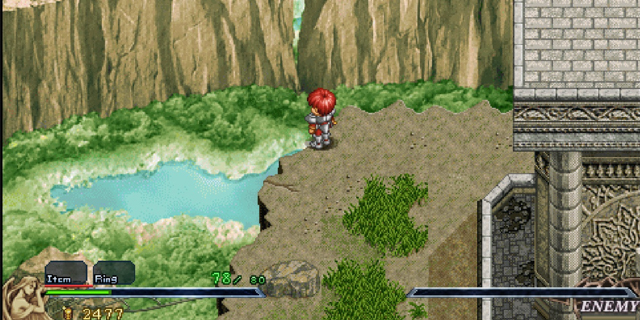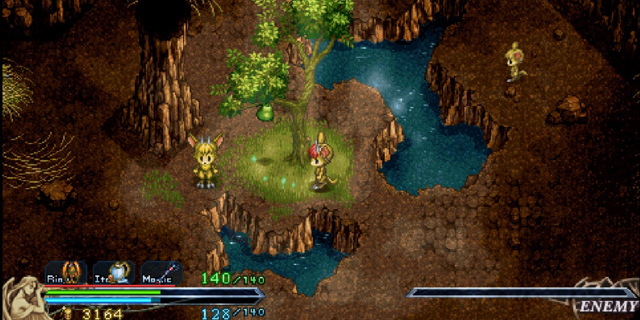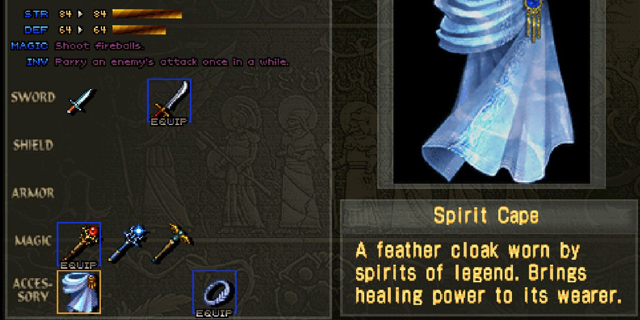
There’s something very fulfilling about the Ys series returning to PC, and it’s all the better that English-speaking gamers are getting in on the action. As one of the very, very few semi-major Japanese developers that makes PC gaming its focus, seeing Falcom return to its home turf after a brief affair with the PSP is something quite nice, and even just a bit nostalgic. Earlier last year, we saw the phenomenal Ys Origin brought to Steam, and it turned out to be one of the best RPGs the service had to offer. So, does Ys I & II Chronicles+ live up to the same standards?
It’s a little hard to say for sure without a lot of qualifiers. Since Chronicles is a remake of a remake of a remake, refining elements from Ys Complete and Ys Eternal before it, both also remakes of the same games. Heck, even the most widely-known TurboCD version is really just a retooling of the PC-8801 originals. (The chronology of Falcom is something bizarre and confusing, so I am not going to waste time going into detail about that.) But, I can say with a fair degree of certainty that Chronicles+, this enhanced port of the PSP title, of the is the definitive version of the game, taking elements from every rendition past to make the fun, fast-paced, highly challenging game that it was always meant to be.

The core gameplay has always proven to be one of Ys’ most recognizable features. It is one of the most fast-paced, skill-reliant JRPGs in existence. Instead of a standard turn-based battle system, or even an encounter-based action system like in Tales or Star Ocean, Ys opts for a very different mode of combat that simply requires you to ram into your opponent at a specific angle. It is a primitive system, but one that still requires careful movements and planning to execute properly. If you are even just a bit underleveled when entering an area and make a couple of careless errors, I can guarantee that you will be dead in under three seconds. If you prepare, though, and plot your actions with precision, you’ll probably do just fine.
That said, Ys is still a brutal game, emphasizing pattern recognition and skill in ways that few other ARPGs have the guts to do. You can’t grind forever, and you’ll certainly hit the level cap and find the game’s second-best weapons before you even hit the latter half of the first game, requiring you use your wits and reflexes to carry you further. This paradigm in design makes the game more akin to a pure action title than anything. Heck, as silly as this may sound, if it weren’t for the stats and item management, it would undoubtedly be an action game. However, said elements do provide a good level of balance to a game that would otherwise be completely vicious. The various items also lend themselves to some inventive puzzles sprinkled throughout the game.

The thing that really makes the whole game click, however, is the speed of it all. The hero, Adol, moves around at a breakneck pace, and combat is done literally by running through enemies. In fact, all interaction with NPCs, chests and doors is accomplished just by running into them at top speed. If only everything in life could be solved so simply. It is because of this speed that the game is able to get away with its higher difficulty level. Even if you do keep dying at a given point, it never feels repetitive or tedious, as you can get right back up from your last save (you can save anywhere, and there’s an absolutely ludicrous number of save slots) and jump right back in. It may be an exceedingly difficult set of games, but they are certainly forgiving.
The visual presentation of Ys I & II is well-constructed, using watercolors and simple sprites to accommodate the top-down view. Unfortunately, the design of characters and enemies is rather uninspired, using stock sprites that feel like they were ripped out of RPG Maker. I’m willing to give Falcom the benefit of the doubt and say that this was kept out of necessity due to the core games’ age, and that designs that may have worked and looked nice on the PC-8801 don’t hold up as well when remastered into high definition. I still feel like it is something worth mentioning, though.
The star of the show for any Ys game’s presentation is undeniably the musical score. Falcom has a knack for turning out energetic, catchy, rock-heavy soundtracks for the Ys games, and have even established a side-business just for re-releasing the series’ soundtracks in different styles and genres. These are likely the best renditions of the games’ scores, finally making full utilization of modern audio hardware and giving the songs the attention they always deserved. These songs have to be heard to be believed, and will surely put you in the mood befitting the gameplay.
If you’re looking for a good, cheap action-RPG fix, then I can’t recommend Ys enough. They are spectacular games that deserve their place in history, due to their innovative combat, unique narrative structure and sublime soundtracks. It’s a great way to see just how far JRPGs have come, and what we can still learn from the past.
Pros: Great combat, stellar music
Cons: Lackluster character design, short adventures



















